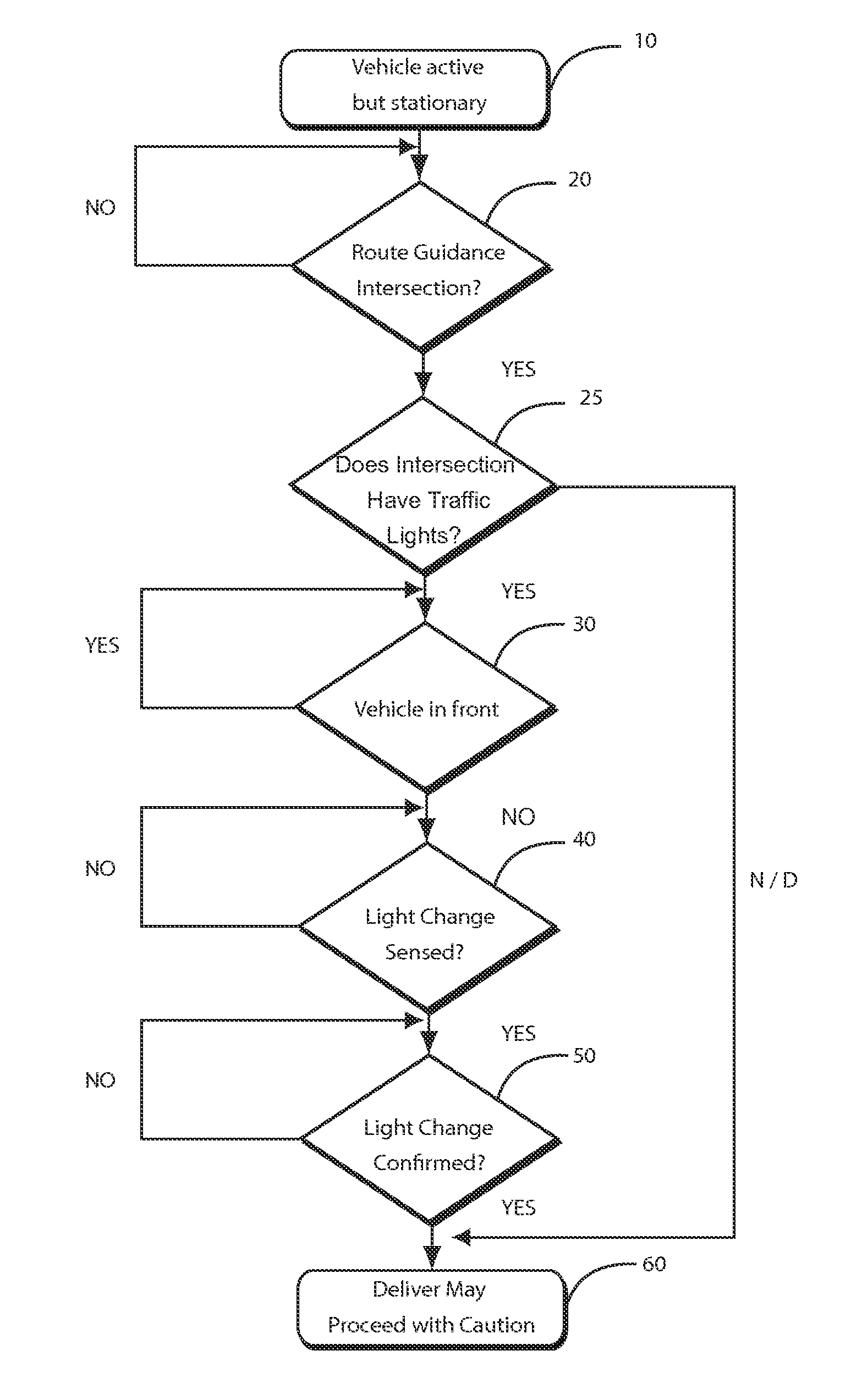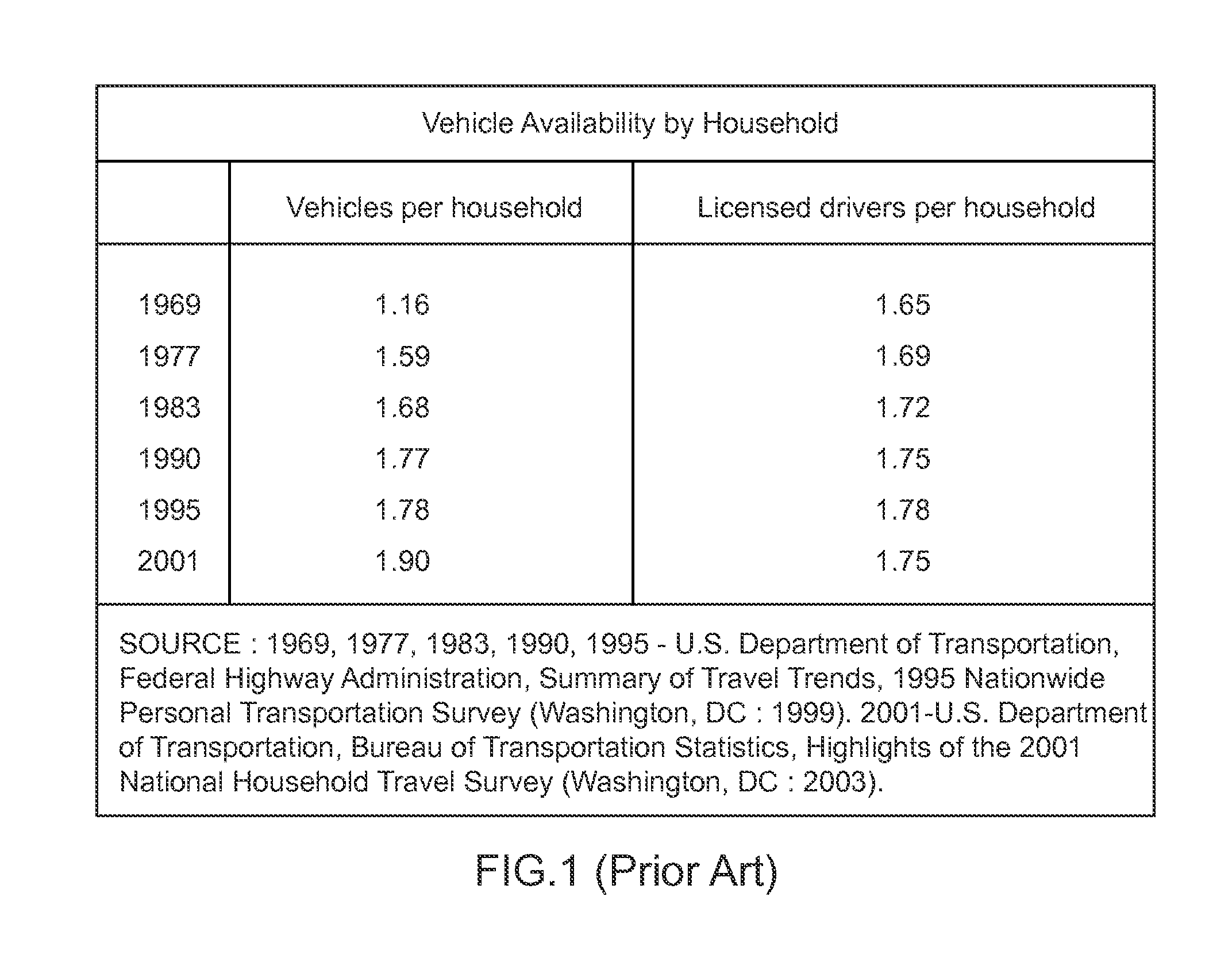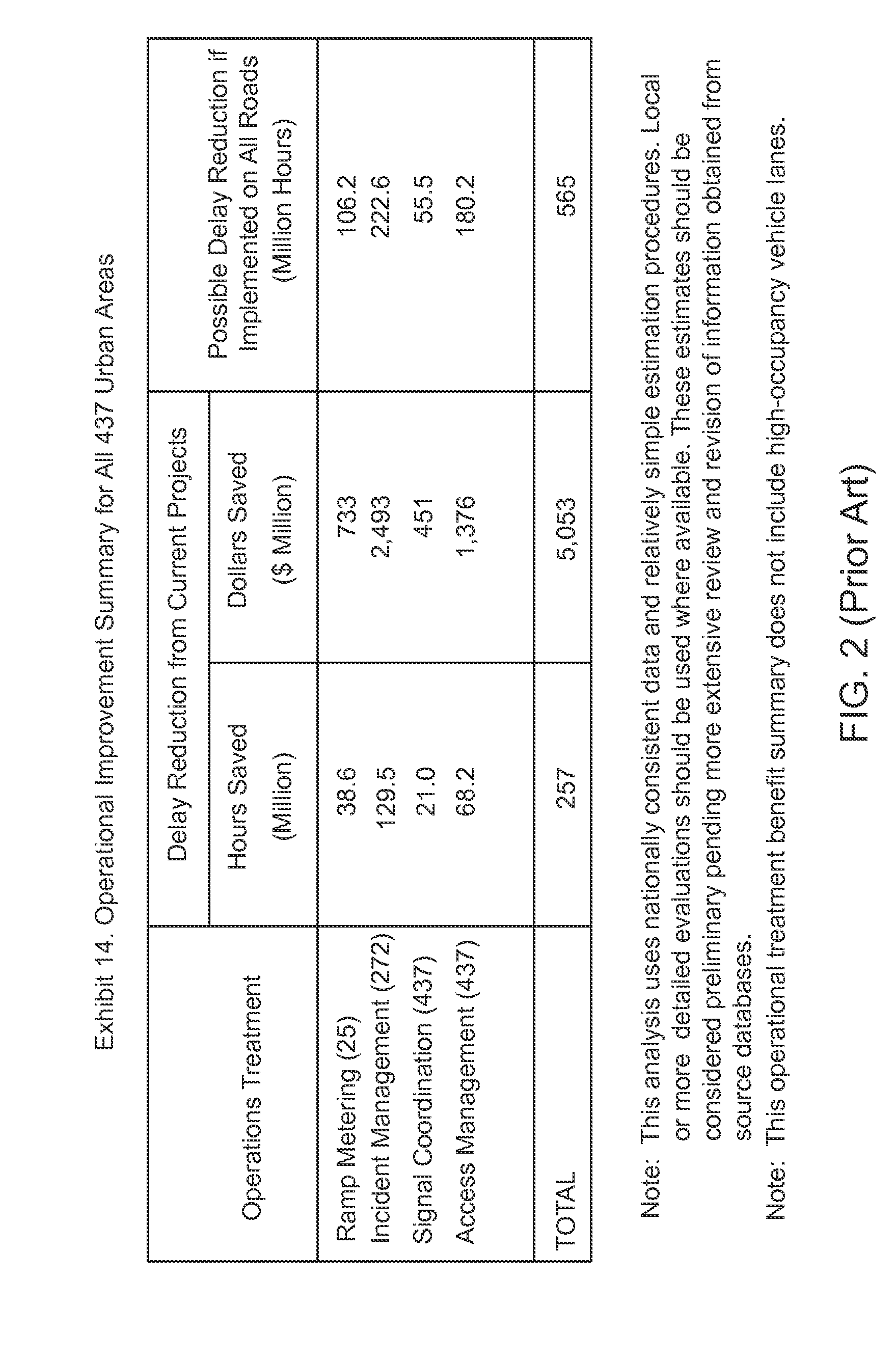Method and apparatus to improve vehicle situational awareness at intersections
a technology for intersections and vehicles, applied in the field of methods and apparatus to improve vehicle situational awareness at intersections, can solve the problems of institutional and not technical full-scale implementation, the annual tally of motor vehicle-related fatalities barely registers as a blip in most people's minds, and all vehicles need to be equipped, so as to improve the situational awareness of vehicles, the effect of easy to s
- Summary
- Abstract
- Description
- Claims
- Application Information
AI Technical Summary
Benefits of technology
Problems solved by technology
Method used
Image
Examples
first embodiment
[0058]The present invention includes a number of embodiments for improving vehicle situational awareness at intersections. A first embodiment may comprise a lens fitted at the top of the windshield or outside the vehicle, for refracting the light to the driver, so the driver may more easily see signals, signage and other features of an intersection, as well as other traffic.
[0059]FIG. 8 is a diagram illustrating a typical driver position 100 in an automobile, with the location of the rear view mirror 200 and the general field of vision for observing traffic lights 300. Note that this field of vision 300 may be partially blocked by rear view mirror 200. In addition, for taller drivers, this field of vision may be obstructed by the roof of the car, such that a taller driver cannot readily see a traffic signal if the car is too close to the signal, unless the driver cranes his neck.
[0060]In the context of the vehicle's position, FIG. 9 is a diagram illustrating an automobile at the sto...
second embodiment
[0063]the invention is used as an aid to prompt the driver that a light has changed. When used as an aid for situational awareness the system may not have to be exact, but merely good enough to recognize a change in light status and prompt the driver to look at the lights before proceeding. As illustrated in FIG. 9, in many situations, a driver who is first in line at a traffic intersection may not be able to readily see the traffic light without craning their neck or looking under the windshield header. As a result, such a driver may not be readily aware when a light changes, causing a delay in movement of traffic. If a driver accelerates too late, only a few cars may make it through the intersection before the light changes. During heavy traffic, this may rapidly cause a backup at a traffic light, resulting in driver frustration, road rage, and the like. Such situations also encourage drivers to accelerate through the intersection even after the light has changed to yellow or even...
third embodiment
[0068]In the present invention, the light change sensor may be combined with other vehicle status information as shown in the decision chart in FIG. 10. This embodiment uses additional data to confirm that the signals received are actually traffic signals intended for the vehicle, and are not traffic signals for adjacent lanes, successive intersections, or mere images of a traffic signal on a billboard.
[0069]As the car comes to a stop in step 10, the route guidance system (e.g., Global Positioning System (GPS) based guidance system or the like) may determine if the vehicle is at or in the vicinity of an intersection in step 20, using the route guidance database and GPS (or other tracking device) position data to determine the location of the vehicle. Vehicle speed and whether the vehicle has stopped can be determined from a vehicle tracking system or onboard vehicle speed sensors, or a combination of sensors. One set of sensors may be used to confirm the status of another. Thus, for...
PUM
 Login to View More
Login to View More Abstract
Description
Claims
Application Information
 Login to View More
Login to View More - R&D
- Intellectual Property
- Life Sciences
- Materials
- Tech Scout
- Unparalleled Data Quality
- Higher Quality Content
- 60% Fewer Hallucinations
Browse by: Latest US Patents, China's latest patents, Technical Efficacy Thesaurus, Application Domain, Technology Topic, Popular Technical Reports.
© 2025 PatSnap. All rights reserved.Legal|Privacy policy|Modern Slavery Act Transparency Statement|Sitemap|About US| Contact US: help@patsnap.com



